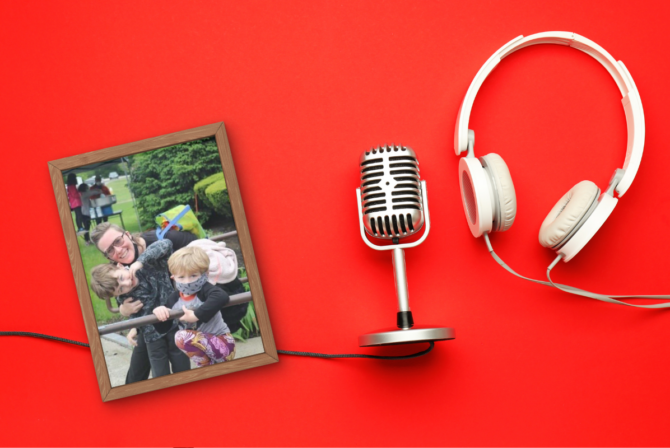I was shopping for elastic-waist jeans at a fancy maternity store the first time I learned about cord blood banking. Right there next to the register was a photo of an adorably plump baby under words that said something like, “Hope for the future.” The sales lady stuffed a few coupons from a company called Viacord in my bag that I threw away when I got home. Over the next few months, ads for cord blood banking seemed to find me everywhere: on the pages of the pregnancy magazines I flipped through at my OBGYN’s office, on the sidebars of my favorite mommy blogs, and coupled with coupons mailed to my home.
I wasn’t exactly sure why I was learning about a “life saving treatment” in such a casual way. My pediatrician-friend told me private cord banking is not recommended by the American Academy of Pediatrics and he didn’t do it for his own kids (deciding instead to benefit from delayed cord clamping). Still, the cord blood companies made some very good claims. What if I could solve a future disease my children, or even I, developed with blood I saved from the birth?
I had a lot of smart friends who banked cord blood so surely there was something to it. When we talked about it though, they all seemed to say the same thing. It was less about hard evidence proving cord blood could help their families in the future, and more about a feeling of safety it gave them all. They’d explain, “It’s an insurance policy,” and, “Science is always advancing faster and faster,” and, “You never know.”
Banking cord blood seemed to be a badge of honor for lots of parents on the mommy boards I would frequent–a way to prove to themselves (and presumably others) that they were doing something right because they were going to the furthest lengths possible to protect their children. To me it sounded like this wasn’t about ever needing to use cord blood; simply signing up to have it saved made these parents feel like they were protecting their children from something. It was really about a sense of control.
Nearly everyone would end their posts about cord blood this way: “If my baby ended up needing it and I didn’t do it, I could never forgive myself.” At that point, the conversation kind of shuts down; there is little anyone can say to refute that (which, incidentally, is what cord blood companies are banking on… but more on that in a minute).
I understood where my friends and all these others parents who did it were coming from. If there is a slight chance this can save my kid, isn’t it worth it? I wanted to feel safe, too. But I still couldn’t shake this nagging feeling that if cord blood really was the key to a cure for future diseases, someone with a medical degree (as opposed to a marketing plan) would be telling me I must do it, or it would be the policy of every hospital to insist on its collection at each birth.
When I started to examine where all of the pro-cord blood messaging came from, it began to sound like another example of a private company preying on the (justifiable) anxieties of parents-to-be in an effort to sell them expensive products or services many of them don’t need. Private banking gives the illusion of safety but can rarely deliver on those promises. In some ways it began to feel like the medical equivalent of those silly kneepads sold to parents whose children just started crawling or those bulky fabric shopping cart covers. Sure, those products will protect a few children from bruises or germs, but for most of us, they’re just a waste of money.
When we started running the numbers, my husband and I determined private banking just didn’t make sense for our family. Many of the diseases cord blood was used to fight weren’t prevalent in people with our racial and genetic makeup. The NIH’s website revealed a child like mine might have a 1 in 200,000 chance of needing cord blood during her lifetime. This Wall Street Journal article from last year confirmed my suspicions that the mechanics of collecting and storing cord blood with private banks is a bit of a shot in the dark anyway. And, as it turns out, if our child did need cord blood in her lifetime, there is a great likelihood she would need someone else’s cord blood and not her own so it’s in everyone’s best interest to donate to public banks for free.
Even if we were convinced we needed to bank cord blood, the cost is considerable. Taking into account the aforementioned coupons (conveniently mailed to me during my third trimester when we were weighing this decision), we would still be on the hook for thousands of dollars to collect and then store our daughter’s cord blood for years. We determined there was a greater chance that our child would go to college than need cord blood, so we took our limited resources and put what would have been our cord blood money into a college fund for our daughter. Instead of nursing the debt on her cord blood each year, we try to contribute to that college fund at every birthday.
At the time we were considering this, I did what I thought a parent was supposed to do: I made the best decision I could make with the information I had. I still stand by it. I am so grateful my girls have never needed cord blood. If it turns out that one day they do, I won’t beat myself up over not having saved it. I had no way of knowing they would need it, and statistically, they won’t. I will remind myself that I weighed all of the information and made the best decision I could.
So to the chorus of emotional statements out there about cord blood, I want to add my voice: I did not bank cord blood and I will be able to forgive myself if that was the wrong choice.







